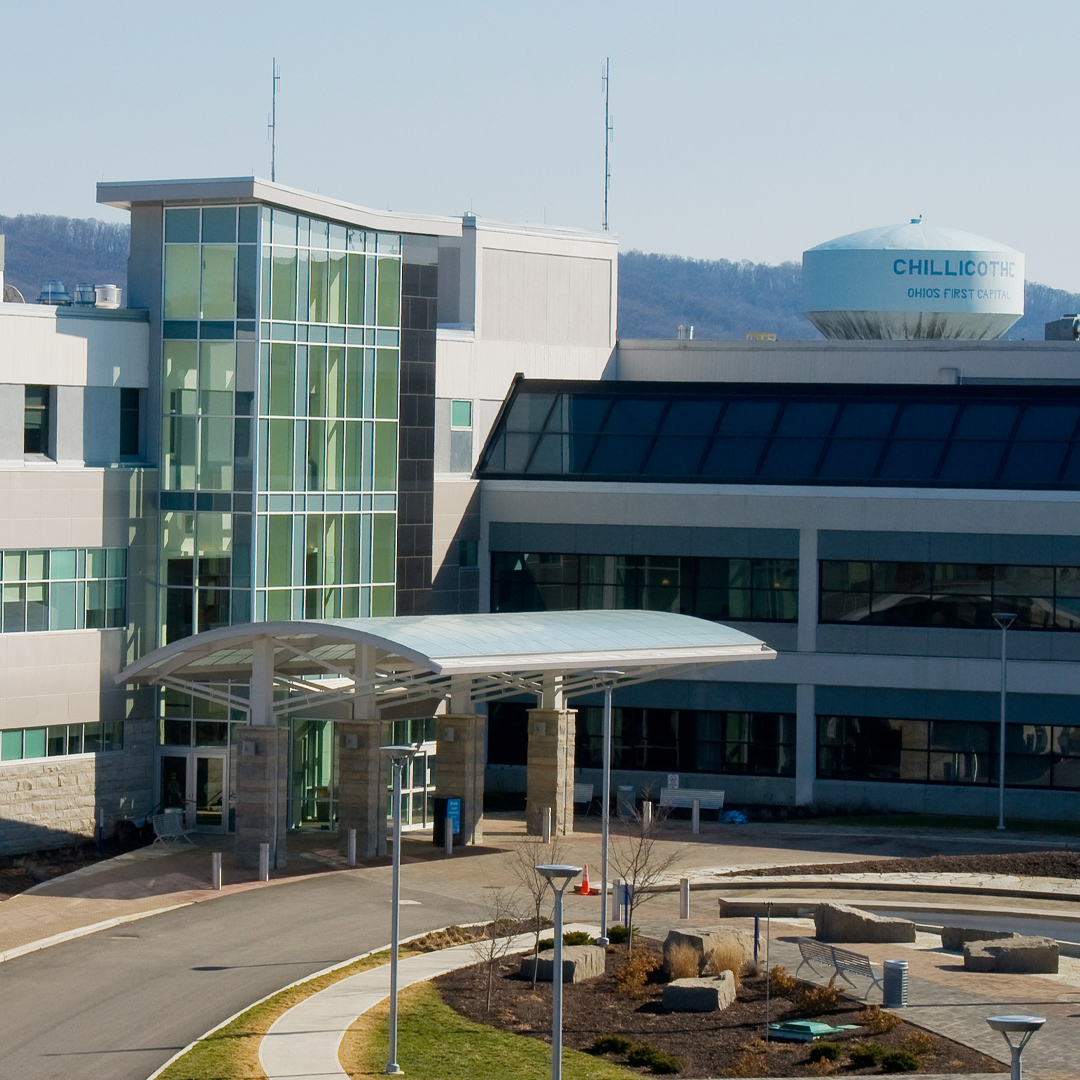Adena taking aggressive, innovative steps to meet Coronavirus challenges

Dire circumstances often require creative responses. That’s certainly been the case for Adena Health System in the midst of its largest COVID-19 patient surge since the pandemic began in the spring.
In addition to challenges created by recent rapid and marked increases in COVID positive patient volumes, mounting hospitalizations across the region also have virtually eliminated the possibility of being able to transfer patients to other health systems when Coronavirus surge numbers exceed Adena Regional Medical Center’s (ARMC) 30-bed COVID cohort unit’s capacity.
In order to continue providing the most comprehensive care, not only for its COVID-19 patients but those utilizing other medical services in the communities served by Adena, the Health System has turned to several new initiatives and solutions for meeting the challenges presented by COVID-19.
“When we were for preparing for COVID-19 back in March, our focus was around understanding the virus and securing the proper amounts of personal protective equipment required to safely care for patients and protect our staff. Fast forward to today and it is vastly different,” said Adena President & CEO Jeff Graham. “We continue to see record numbers daily of COVID patients, as well as care for record numbers of patients through our urgent care locations. I cannot express enough my gratitude for our providers and caregivers during this time, as we have been able to safely care for the communities across our nine-county service region while also keeping a focus on tomorrow. Our ability to anticipate the challenges ahead and put creativity and innovation at the forefront to implement strategies quickly and effectively has allowed us to stay strong and provide care for the patients and families counting on us.”
Here’s a brief rundown of those efforts and what they mean to patients and their families:
- Critical Access Hospitals: As patient surges in the COVID-19 unit at ARMC began to more frequently push toward capacity slightly less than a month ago, Adena Greenfield Medical Center (AGMC) and Adena Pike Medical Center (APMC) began working toward creating space in their hospitals for COVID-19 patients on the road to recovery who were not quite healthy enough to be sent home. The idea was to free up beds and staffing in the COVID-19 unit at Adena Regional Medical Center for the most serious Coronavirus patients. AGMC prepared an eight-room wing separate from the remainder of the hospital, outfitting it to safely handle the needs of Coronavirus patients, and opened it to its first patients a couple weeks ago. With the surge in hospitalizations, the unit most days is operating at or near capacity. Adena Pike Medical Center in Waverly, meanwhile, began accepting COVID-19 patients with a similar approach to that of AGMC last week.
- Adena at Home: In another effort to ease the crunch on bed space and staffing, an Adena at Home initiative began this week. Using a telemedicine and tele-monitoring approach, the program identifies COVID-19 patients recovering in the COVID units who are able to care for themselves at home but still have symptoms significant enough to require monitoring. Those patients can now be sent home with self-monitoring equipment such as an iPad with messaging and video capabilities, blood pressure cuffs and pulse oximeters to take readings they can share with medical staff who check in daily on their condition and answer questions or make any needed adjustments to medications. The initiative also offers 24/7 remote nursing support should a patient or their families experience something unexpected overnight. The program may be expanded over time to include patients who are showing symptoms at the Emergency Department or Urgent Cares that may not be serious enough to require admittance as an inpatient. Primary care offices may become part of a third phase of implementing the Adena at Home program should it become necessary. Patients will not be required to take part in the Adena at Home option, and their families will be included in the decision-making process as well as receive education on how they can help monitor the patient and what to do should an emergency arise.
- Use of PACCAR Medical Education Center: As a way to help determine the best course of action for patients related to the COVID-19 surge, the PACCAR Medical Education Center on the Adena Regional Medical Center campus is being pressed into service the middle of this month as a respiratory surge center. Patients arriving at the Emergency Department or referred by their primary care physician with symptoms that could suggest COVID-19 will be directed to the facility for a full evaluation and possible period of monitoring to determine the best options for their care.
- Blended and expanded staffing: Adena is aggressively pursuing additional nursing staff to help meet increasing needs brought about by the COVID-19 patient surge. In addition to conducting a recent recruitment and hiring fair to boost permanent staffing, the health system has contracted with a rapid staffing firm specializing in providing medical staff in disaster relief situations to temporarily help bolster staff levels. Many among the Health System and Adena Medical Group staff also have either volunteered to take extra shifts or to tackle other duties in order to meet staffing needs to best serve patients.
- COVID Inpatient Placements: Adena Regional Medical Center has begun placing COVID and non-COVID patients on the same inpatient units in some trial areas. This type of blended patient placement allows for flexibility with nursing assignments and room availability, and offers more ability to match patient’s needs with provider and staff resources and skill sets throughout the system. Care teams on these units are skilled in managing a variety of other infectious disease processes such as MRSA and C-Diff in safely meeting the care needs for these patients.
As it has been from the start, the situation surrounding the Coronavirus pandemic continues to be a fluid one. Adena officials will continue monitoring the latest in vaccine development and availability and making any other operational changes that should become necessary in the coming months in order to see that our communities navigate the crisis as effectively and safety as possible.
Meanwhile, every individual in the community plays a role in reducing COVID-19 patient surges. Please observe well-publicized public safety protocols, including wearing masks, maintaining at least six feet of social distancing, practicing frequent and rigorous hand washing for at least 20 seconds at a time and avoiding large gatherings.
Graham concluded, “Our healthcare heroes need your help. Our caregivers have been treating COVID-19 patients for over 10 months – and they are exhausted. We cannot pick and choose when we follow these safety guidelines. We have to follow them every single day if we want to beat this virus. We are all in this together.”

